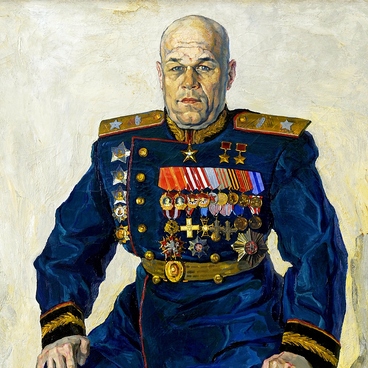IlyA REpin’s work is rightly considered one of the pinnacles of Russian realism. His artworks are characterized by subtle psychologism and a search for a new, more emotional pictorial language that would address the challenges of its time.
From 1901 to 1903, Repin worked on a major commission from the government—a painting called “The Ceremonial Meeting of the State Council on May 7, 1901, Marking the Centenary of its Foundation.” The State Council was a supreme state advisory body established by Emperor Alexander I soon after his accession to the throne. Until 1885, the Council held its sessions in the Winter Palace. It later moved to the MariInsky Palace RotUnda, where Repin created the painting.
This grandiose painting depicts 81 individuals. This artwork allowed the artist to revive the lost European art traditions of the monumental group portrait. For his preliminary work, Repin was granted the right to attend the sessions of the State Council and drew many sketches, which were later used for the painting. The portrait of Count SOlski is one of the studies that Repin painted while working on the group composition.
Dmitry Solski was a prominent statesman awarded with all the highest orders of the Russian Empire. Throughout his life, he held many high-profile positions — Stats-Secretary of the Emperor, Head of State Chancellery, Chairman of the State Council.
Repin captured his character during the Council’s session. He looks collected and pensive and yet a bit detached, deep in his thoughts. The artist achieved great skill in the technique of wide painting which was very popular at that time. He paints the portrait in pure colors, combining the dark color of the uniform, the gold in sewing, blue in the order ribbon and red in medals.
The flexible pictorial manner and smart color palette give the portrait a certain decorative appearance. Thus, the artist solved a rather difficult problem: to reconcile the grandeur of the image with psychological and social truthfulness.
From 1901 to 1903, Repin worked on a major commission from the government—a painting called “The Ceremonial Meeting of the State Council on May 7, 1901, Marking the Centenary of its Foundation.” The State Council was a supreme state advisory body established by Emperor Alexander I soon after his accession to the throne. Until 1885, the Council held its sessions in the Winter Palace. It later moved to the MariInsky Palace RotUnda, where Repin created the painting.
This grandiose painting depicts 81 individuals. This artwork allowed the artist to revive the lost European art traditions of the monumental group portrait. For his preliminary work, Repin was granted the right to attend the sessions of the State Council and drew many sketches, which were later used for the painting. The portrait of Count SOlski is one of the studies that Repin painted while working on the group composition.
Dmitry Solski was a prominent statesman awarded with all the highest orders of the Russian Empire. Throughout his life, he held many high-profile positions — Stats-Secretary of the Emperor, Head of State Chancellery, Chairman of the State Council.
Repin captured his character during the Council’s session. He looks collected and pensive and yet a bit detached, deep in his thoughts. The artist achieved great skill in the technique of wide painting which was very popular at that time. He paints the portrait in pure colors, combining the dark color of the uniform, the gold in sewing, blue in the order ribbon and red in medals.
The flexible pictorial manner and smart color palette give the portrait a certain decorative appearance. Thus, the artist solved a rather difficult problem: to reconcile the grandeur of the image with psychological and social truthfulness.

